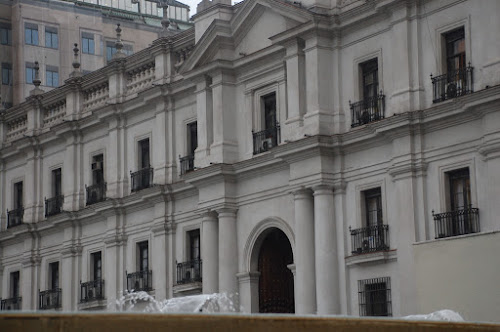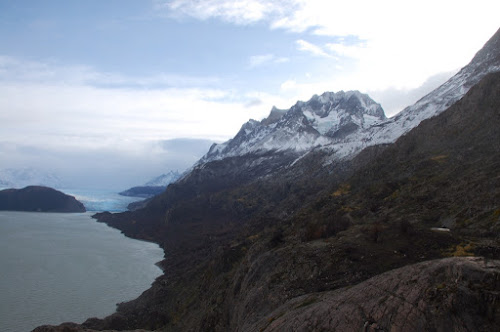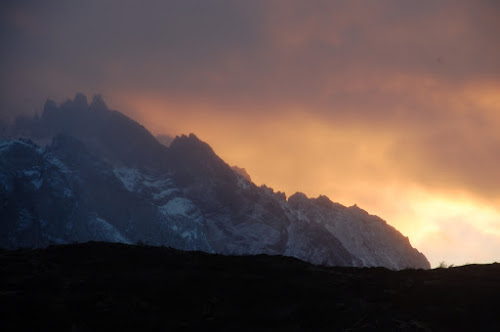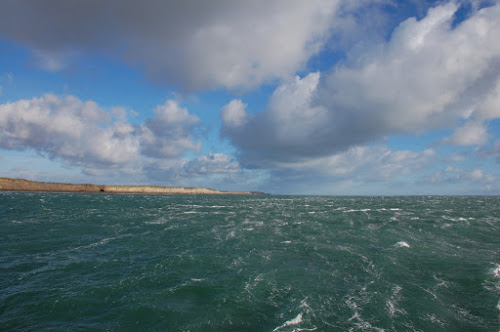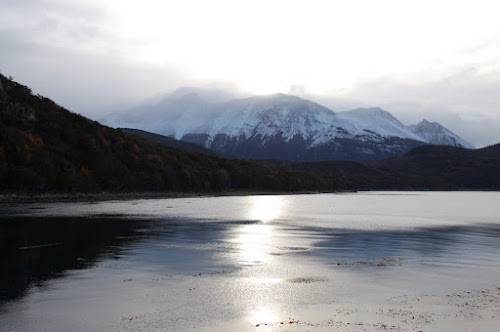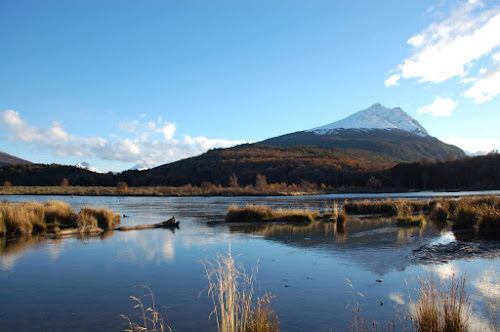The day started ominously, as we walked up the stairs of the Baquedado metro station in the heart of Santiago. Sitting at the entrance of the station, was a man typing on his laptop with a data card and a very expensive Canon camera. On his face was a full on gas mask, Breaking Bad style. This is one of the most disorienting and disjointed images, a dissonance with the leafy boulevards, innumerable cafes and all the other trappings of this huge, progressive and global city.
My first thought was that this could be someone intent on doing harm to the public in the very busy and essential metro here. But, with 3 police and guards watching on from 10 feet away, this seemed very improbable. As we cautiously walked above ground, things became clear. As we emerged from station, we were in the middle of a thousand+ people protesting, as well as over a hundred riot gear cops. In the distance, i saw tear gas drifting up from in front of one of the University of Chile buildings. Whoa. The man in the subway is clearly a journalist recording this student led protest about inequality within the education system.
We proceeded carefully and directly through the protest, wanting to get through the potential smoke zone as quickly as possible. Many of the people here have scarfs wrapped around their neck to guard against the gas. There are a smattering of others with gas masks, the extra prepared ready to record or agitate. Everyone, the protesters, the cops and bystanders, are quiet, as if waiting for the conflict to begin.
We walk down the principal boulevard to the stately Bellas Artes museum, maybe a half mile away. Standing out front museum is a platoon of riot cops, reinforcing that this is not a normal day out. The entire time we are in the museum, sirens are ringing out from the streets and my mind keeps reverting back to the scenes we have just seen in the streets. This connection is made stronger with the excellent exhibit of works by Hernan Miranda.
The most powerful works in the exhibition are done on large copper plates, with pictures of riot police in action, an artistic twist to the reality we have seen an hour ago.
The theme of public conflict continues as we move on towards one of the most powerful and disturbing museums I have ever been to, the Museum of Memory and Human Rights.
This museum is dedicated to sharing the hard history of the 1973 coup that established Pinochet as dictator with Allende's death and all of the horrors that followed; the disappearances, the concentration camps, the torture, the truth, and the reconciliation. We were privileged to be there with Paulo and Natalia, getting the personal painful reaction to this history as an additional context to the museum.
Three searing parts of the museum were a massive wall of candid pictures of those that were disappeared during the Junta, with empty frames interspersed throughout the wall. Then, listening to Allende's final radio address on the day he died and power transferred to the Junta, from the presidential palace that had been bombed by his own Air Force (pictured below and repaired from the damage caused by the coup). Finally, a video with survivors of torture talking about their experiences in detention and the lifetime of hurt that was inflicted, as well as the strength of overcoming those terrors. Everything in the museum was incredibly well done, as I would expect from this city and befitting the topics and history covered.
This brought to a close our weighty trifecta of a day, from the streets to art to political history. A powerful day and one that has deepened our understanding of this city we have been calling home for the last week.

